In the dead of night, bats and insects are locked in an acoustic war.
Bats send out ultrasonic clicks and listen for the echoes to home in on insect prey. Insects that hear those hunting calls must defend themselves. Some flee. Others send out their own ultrasonic sounds to scramble bats’ sonar. And now, scientists have found a new way that some night-flying beetles use sound against hungry bats. They use it to disguise themselves as toxic moths.
Wildlife biologist Harlan Gough led the research. He works at the U.S. Fish and Wildlife Service in Walla Walla, Wash. He and his colleagues shared their findings last May 15 in Biology Letters.

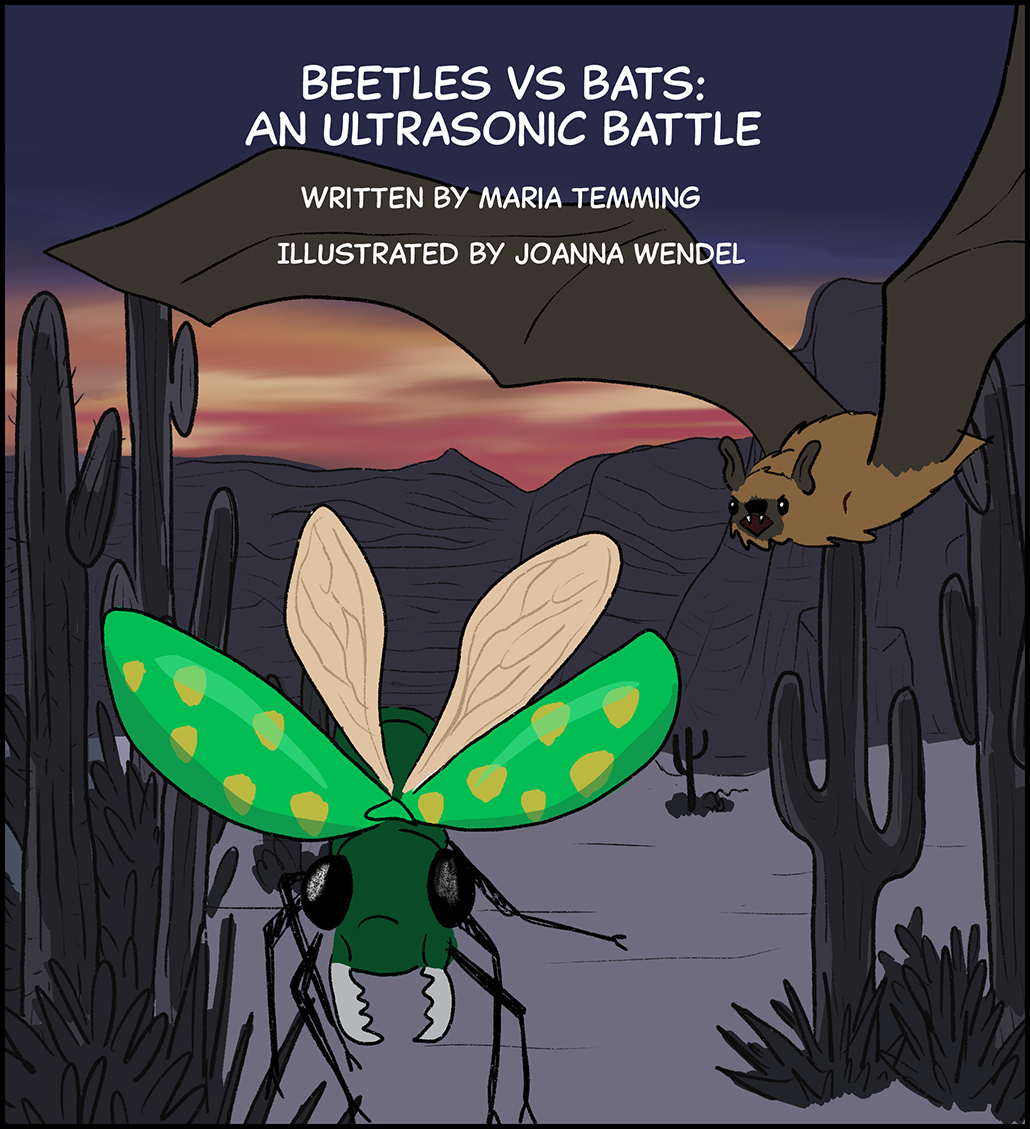
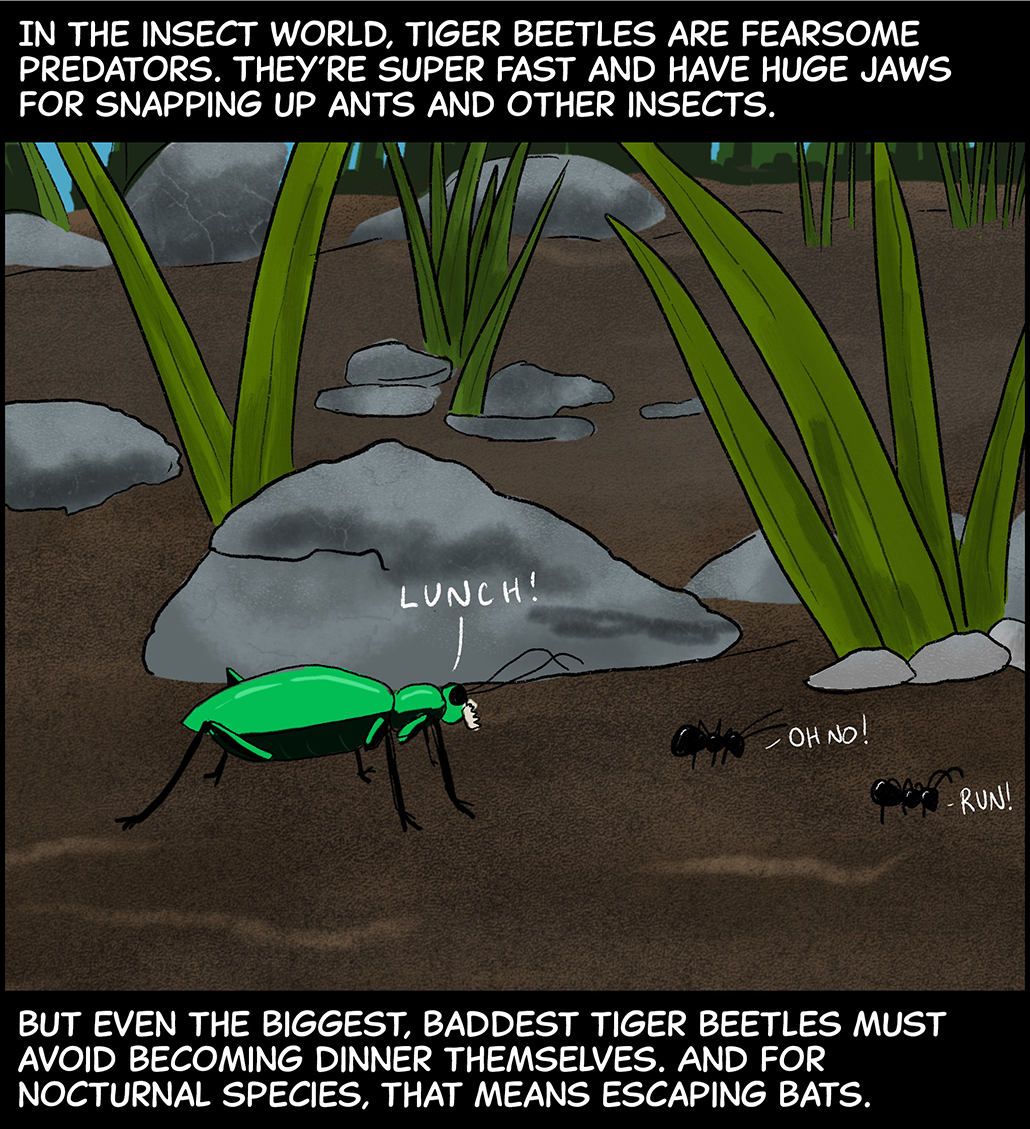
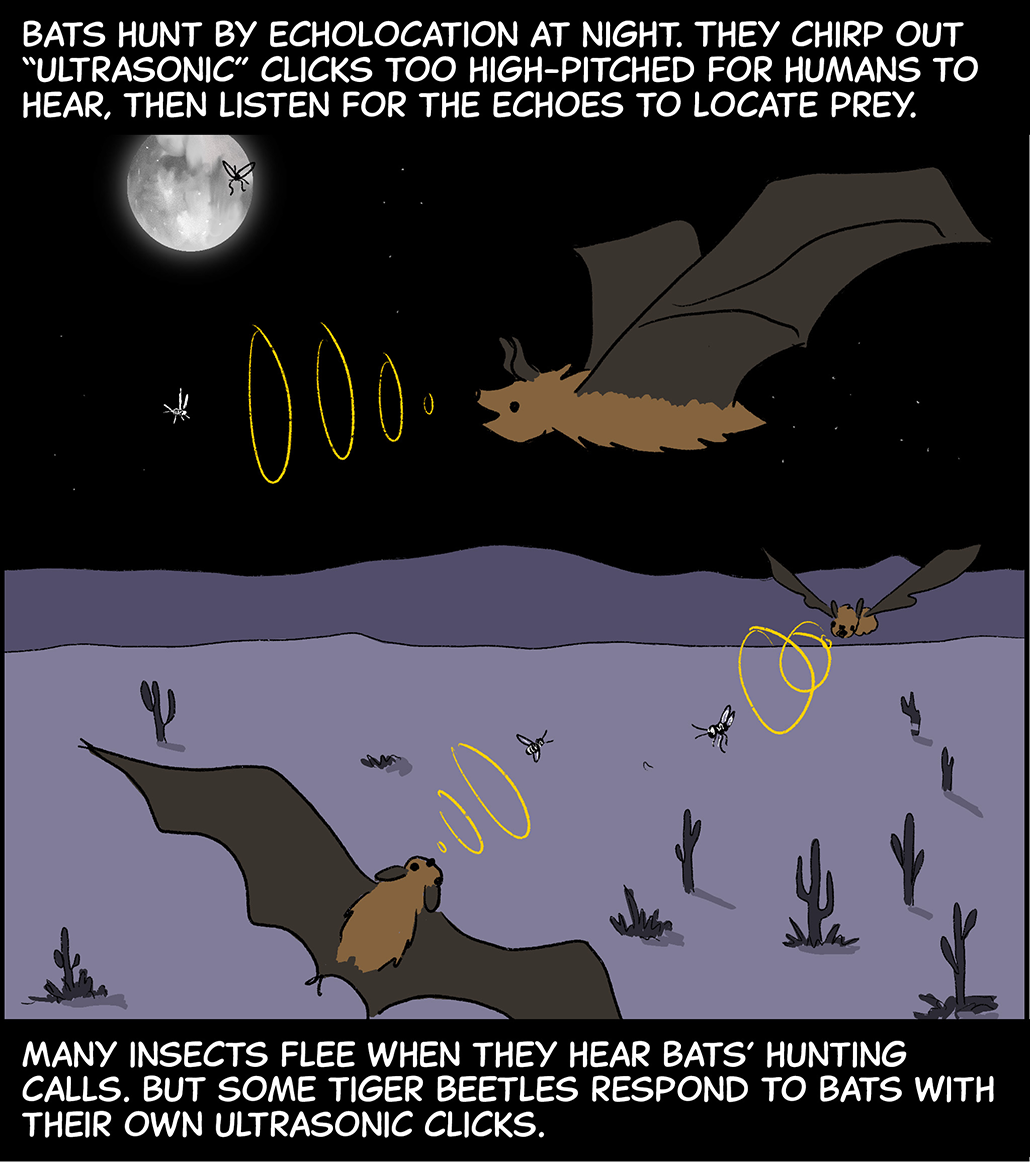

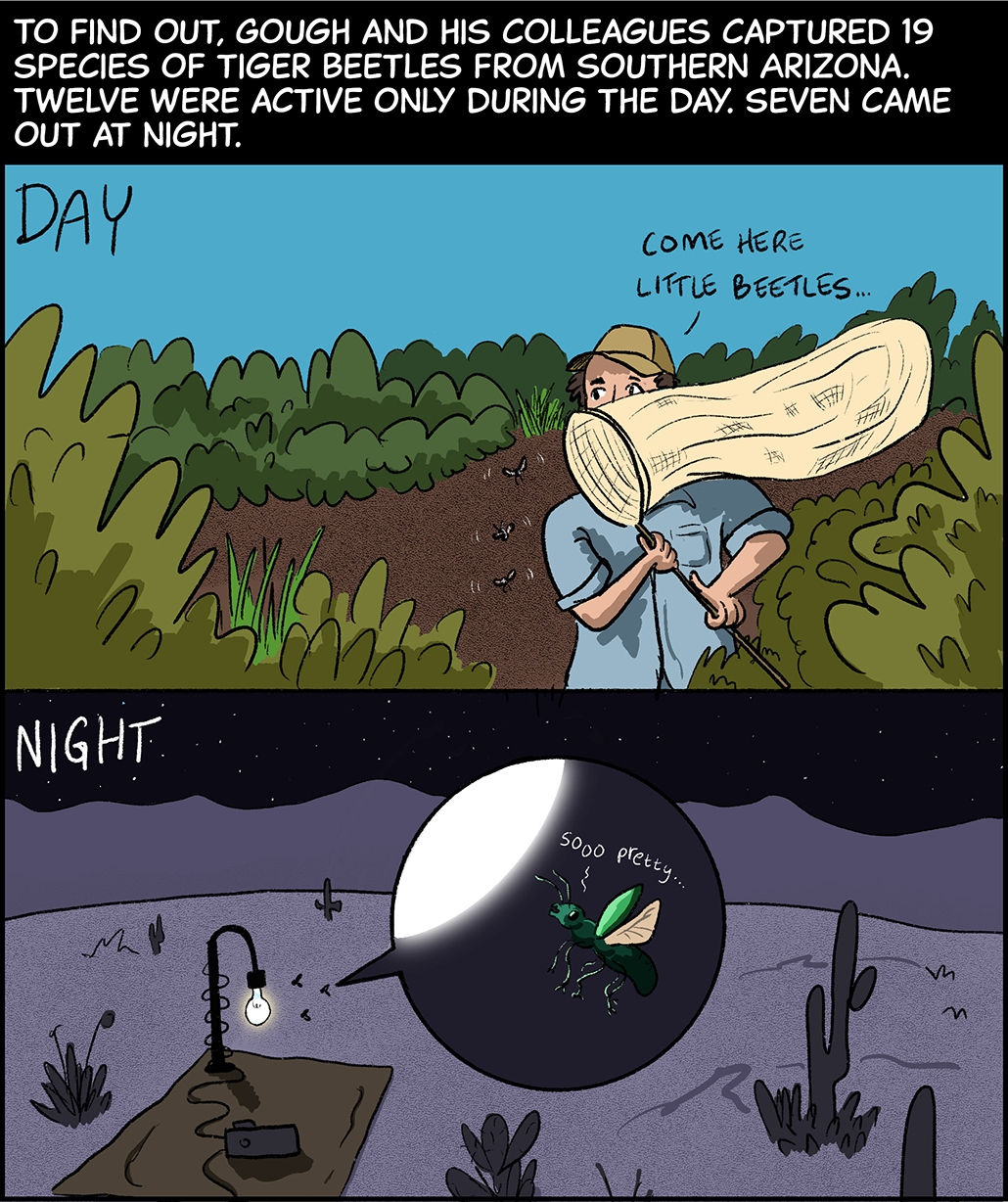
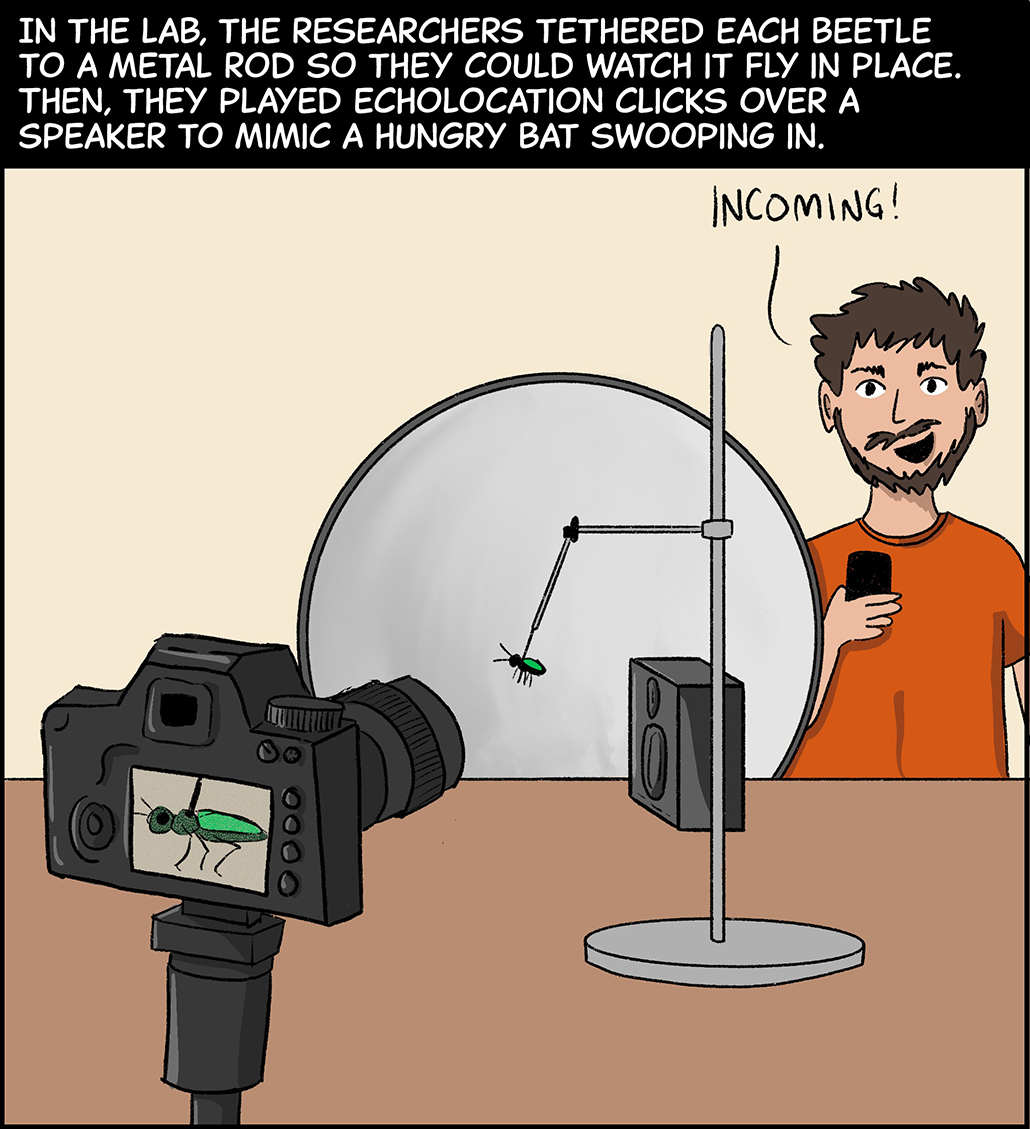
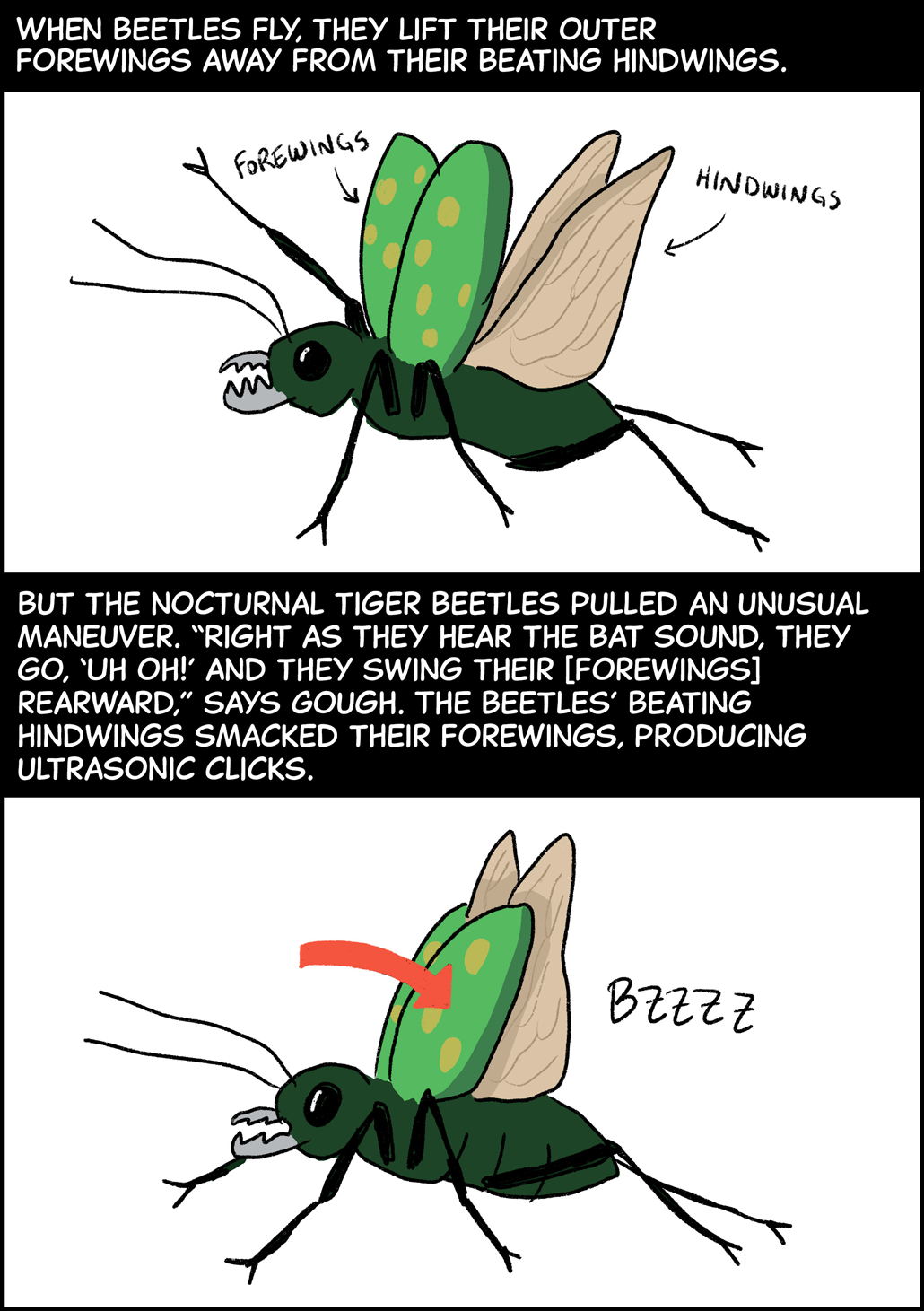

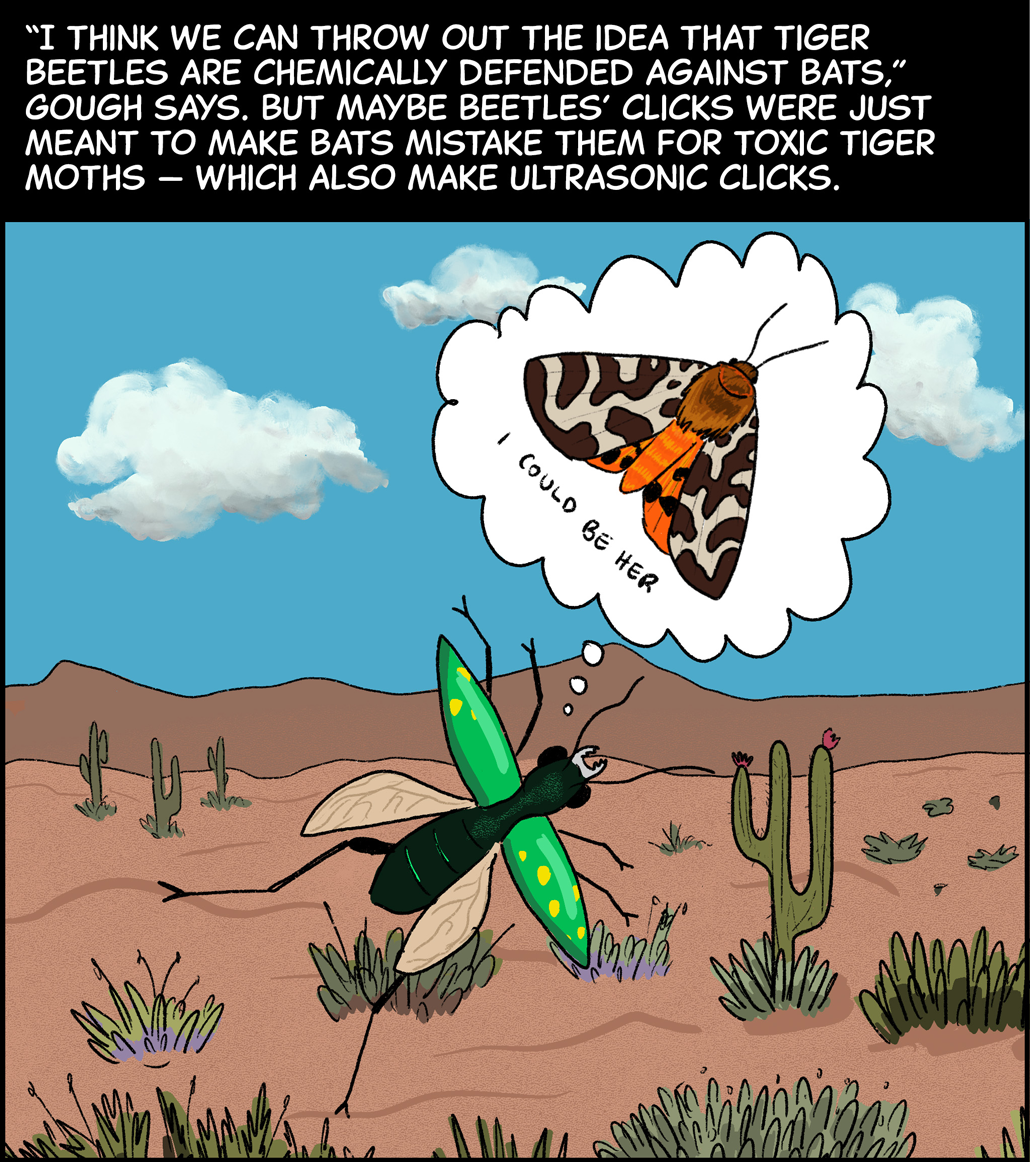

![“If you look at your porch light at night, you see all kinds of insects that…we know can get eaten by bats,” Gough says. “What are some [anti-bat] strategies that other insects use?”](https://www.snexplores.org/wp-content/uploads/2025/03/1030_bat_beetle_comic_10.png)













 Bengali (Bangladesh) ·
Bengali (Bangladesh) ·  English (United States) ·
English (United States) ·